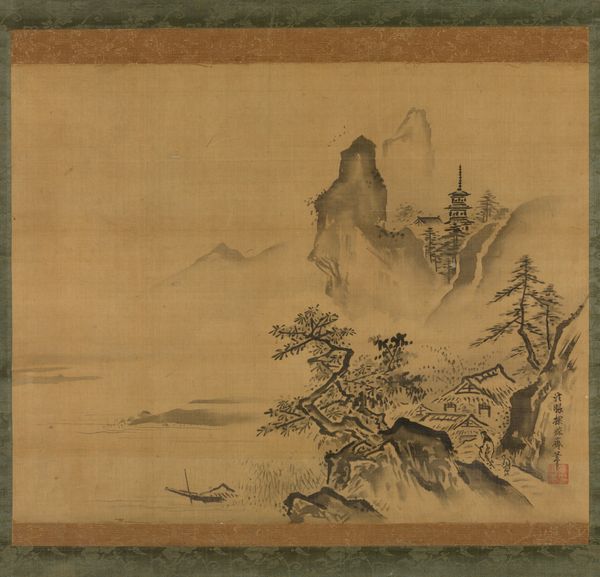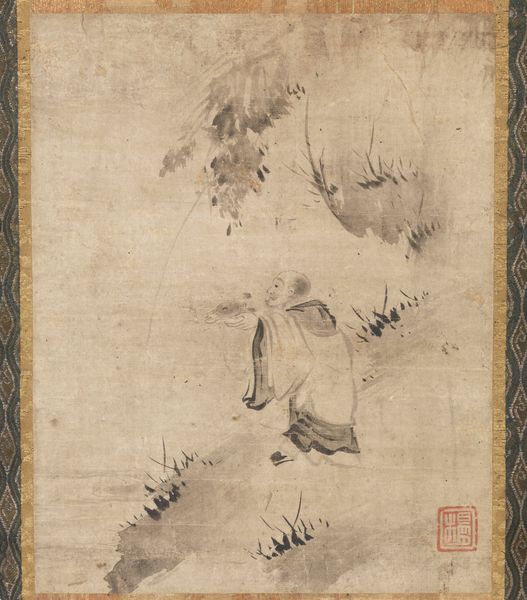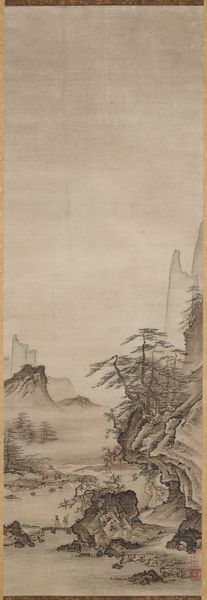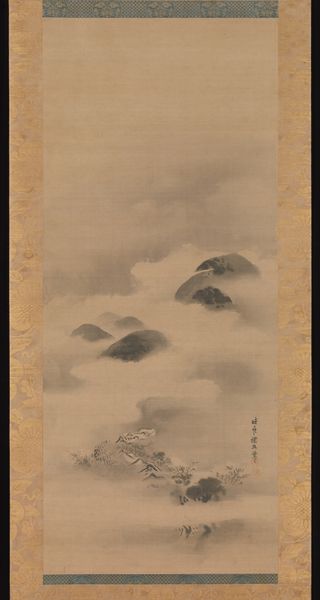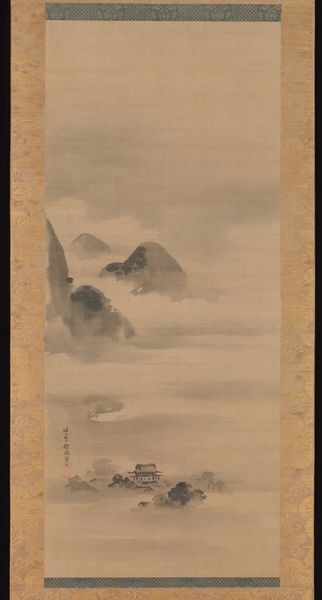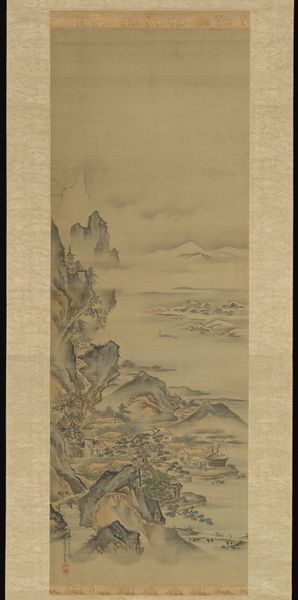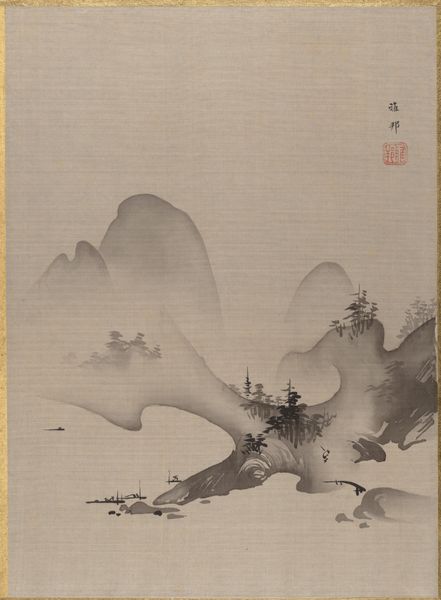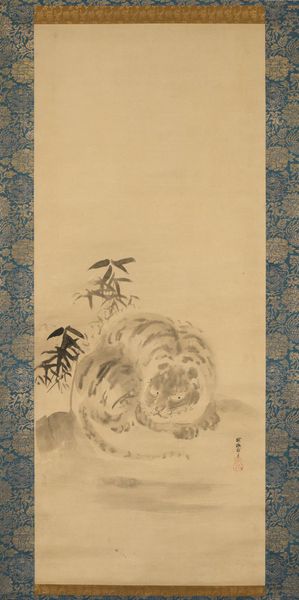
drawing, paper, ink-on-paper, hanging-scroll, ink
#
drawing
#
asian-art
#
landscape
#
charcoal drawing
#
paper
#
ink-on-paper
#
hanging-scroll
#
ink
#
underpainting
#
calligraphy
Dimensions: 48 1/16 x 19 3/4 in. (122.08 x 50.17 cm) (image)85 15/16 x 25 15/16 in. (218.28 x 65.88 cm) (overall, without roller)
Copyright: Public Domain
This hanging scroll depicting a landscape was created by Kano Tan'yū in Japan during the Edo period. It exemplifies the artistic principles embraced by the Kano school. The Kano school gained prominence through its patronage by the ruling elite and its establishment of a rigid set of conventions. Kano Tan'yū, as one of the most celebrated members of the school, was instrumental in shaping the style and solidifying its status as the dominant artistic institution of the time. This ink-on-paper landscape exemplifies the Kano school's emphasis on formal training, adherence to established techniques, and the incorporation of Chinese painting styles. The landscape embodies the Kano school's objective to represent an idealized and harmonious vision of nature, reinforcing the social and political order of the Edo period. To understand this artwork better, we could study the art academies and patronage networks that shaped its creation. By examining historical documents, such as artist biographies and institutional records, we can gain a deeper understanding of the complex interplay between art, power, and society in the Edo period.
Comments
minneapolisinstituteofart almost 2 years ago
⋮
Kanō Tan'yū was one of the foremost artists of the Edo period (1600-1868). In his position as official painter to the Tokugawa rulers, he had access to their great collections of art including ink paintings by earlier Japanese artists as well as examples imported from China. Flanking an iconic image of a Buddhist deity (in this case, Kannon, the bodhisattva of mercy and compassion) with unconventional themes like the tiger and landscape seen here, was an idea that first emerged among iconoclastic Chinese painters who were adherents of Zen Buddhism. In his impressionistic handling of ink, too, Tan'yū harkens back to earlier Zen-inspired artists who wielded the brush in a free and spontaneous manner.
Join the conversation
Join millions of artists and users on Artera today and experience the ultimate creative platform.

